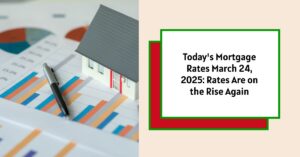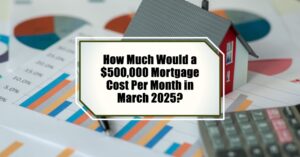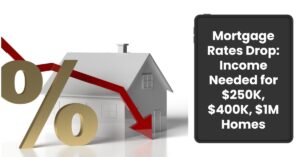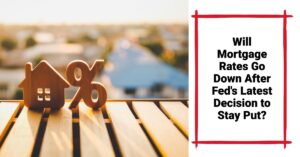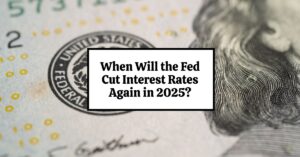If you're thinking about buying a home or refinancing, you're probably glued to today's mortgage rates. As of March 24, 2025, the news isn't fantastic: mortgage rates are indeed on the rise. The average 30-year fixed mortgage rate is currently sitting at 6.51%, while the 15-year fixed mortgage rate is at 5.89%. So, if you're looking for a definitive answer, yes, rates are up, and it's time to understand what that means for your wallet and your home-buying dreams.
Today's Mortgage Rates March 24, 2025: Rates Rise Mildly Again
Key Takeaways You Need to Know
Let's break down the essential facts:
- Current 30-Year Fixed Mortgage Rate: 6.51%
- Current 15-Year Fixed Mortgage Rate: 5.89%
- Refinance Rates: Generally a bit higher than rates for new home purchases.
- Market Outlook: Expect mortgage rates to hang around these levels for the near future. That's my gut feeling based on what I'm seeing.
Now, let's dive into the details.
A Closer Look: Current Mortgage and Refinance Rates
To give you a comprehensive picture, here's a breakdown of different mortgage types and refinance rates, based on the latest data from Zillow.
Current Mortgage Rates (March 24, 2025)
| Mortgage Type | Rate (%) |
|---|---|
| 30-Year Fixed | 6.51 |
| 20-Year Fixed | 6.25 |
| 15-Year Fixed | 5.89 |
| 5/1 Adjustable-Rate (ARM) | 6.79 |
| 7/1 Adjustable-Rate (ARM) | 6.92 |
| 30-Year VA | 6.09 |
| 15-Year VA | 5.57 |
| 5/1 VA | 6.07 |
| 30-Year FHA | 6.01 |
| 15-Year FHA | 5.72 |
Current Refinance Rates (March 24, 2025)
| Refinance Type | Rate (%) |
|---|---|
| 30-Year Fixed | 6.53 |
| 20-Year Fixed | 6.11 |
| 15-Year Fixed | 5.88 |
| 5/1 ARM | 7.01 |
| 7/1 ARM | 7.40 |
| 30-Year VA | 6.08 |
| 15-Year VA | 5.90 |
| 5/1 VA | 6.13 |
| 30-Year FHA | 6.01 |
| 15-Year FHA | 5.72 |
Notice anything interesting? Refinance rates are generally a touch higher than rates for purchasing a new home. This is pretty typical, but it's worth noting.
Understanding How These Rates Impact Your Monthly Payments
Okay, numbers are important, but what do they REALLY mean? Let's break down what these rates translate to in terms of monthly payments. This is where the rubber meets the road.
What's Your Monthly Payment on a $150,000 Mortgage?
If you're looking at a smaller mortgage of $150,000 with a 30-year fixed rate of 6.51%, your estimated monthly payment would be around $948. That includes principal and interest, before taxes and insurance.
Monthly Payment on a $200,000 Mortgage
Bump that up to $200,000, and at the same 6.51% for a 30-year fixed loan, you're looking at a monthly payment of roughly $1,265.
What's Your Monthly Payment on a $300,000 Mortgage?
For a $300,000 mortgage at 6.51%, the estimated monthly payment jumps to about $1,898. See how quickly that adds up?
Monthly Payment on a $400,000 Mortgage
Now let's go even bigger. If you needed to borrow $400,000, expect to pay approximately $2,531 per month at the current rate.
Monthly Payment on a $500,000 Mortgage
Finally, a $500,000 mortgage at 6.51% would mean a monthly payment of around $3,164.
Important Note: These are just estimates! Remember, these figures don't include property taxes, homeowner's insurance, or potentially Private Mortgage Insurance (PMI) if you put down less than 20%. Those can significantly increase your actual monthly costs. Always get a complete estimate from your lender.
Breaking Down Your Monthly Mortgage Payment: The PITI
Mortgage payments aren't just about the loan amount. There are usually four main parts that make up your monthly payment – sometimes abbreviated as PITI:
- Principal: This is the actual amount you borrowed.
- Interest: The lender charges you interest for borrowing the money.
- Taxes: Property taxes, usually paid to your city and state.
- Insurance: Your homeowner's insurance premium protects you against damage or loss.
- PMI (Private Mortgage Insurance): If you don't put down 20%, you'll likely have to pay PMI.
What's Driving These Mortgage Rates? Understanding the Factors at Play
It's not random chance that mortgage rates are where they are. Several factors are constantly influencing them:
- The Overall Economy: This is the big one. A strong, stable economy usually means lower rates. Uncertainty or fears of inflation can push rates higher.
- The Federal Reserve (The Fed): The Fed sets the federal funds rate, which indirectly impacts mortgage rates. When the Fed raises rates, mortgage rates tend to follow.
- Demand for Home Loans: When more people want to buy houses, demand for mortgages goes up. This can lead to higher rates. Conversely, if demand is low, lenders may lower rates to attract borrowers.
- Your Credit Score and Financial Situation: Lenders look at your credit score, debt-to-income ratio, and overall financial health to assess risk. The better your credit, the lower the rate you'll likely get.
Recommended Read:
Mortgage Rates Trends as of March 23, 2025
Mortgage Rates Drop: Can You Finally Afford a $400,000 Home?
Expect High Mortgage Rates Until 2026: Fannie Mae's 2-Year Forecast
Navigating the Mortgage Market: Tips for Success
Buying a house when rates are rising can feel daunting, but here are some tips to make the process smoother:
- Get Pre-Approved: Before you even start seriously looking, get pre-approved for a mortgage. This tells you how much you can borrow and strengthens your offer when you find a home.
- Shop Around for Rates: Don't just go with the first lender you find. Shop around and compare rates from different lenders.
- Consider Different Loan Options: Think about whether a fixed-rate mortgage or an adjustable-rate mortgage (ARM) is right for you.
- Be Aware of Closing Costs: Factor in closing costs, which can include appraisal fees, title insurance, and other expenses.
Recent Trends and What They Mean for You
I've been watching the mortgage market closely, and here's what I'm seeing. Even with some hopes for rate cuts earlier in the year following Federal Reserve meetings, the reality is that rates haven't dropped significantly.
For much of the year, the 30-year fixed mortgage rate has been flirting with 7%. The fact that we're now at 6.51% is a small improvement, but it's still a challenging environment for first-time homebuyers.
My advice? Don't wait for the “perfect” rate. Focus on finding a home you love and can comfortably afford, even with the current rates.
Conclusion: Stay Informed and Take Action
The mortgage market is always changing, but one thing remains constant: knowledge is power. Stay informed about current rates, understand the factors that influence them, and take proactive steps to navigate the market. Talk to a financial advisor, get pre-approved, and shop around for the best rates.
Buying a home is a big decision, but with the right information and a solid plan, you can make it happen.
Work With Norada, Your Trusted Source for
Real Estate Investments
With mortgage rates fluctuating, investing in turnkey real estate
can help you secure consistent returns.
Expand your portfolio confidently, even in a shifting interest rate environment.
Speak with our expert investment counselors (No Obligation):
(800) 611-3060
Also Read:
- Will Mortgage Rates Go Down in 2025: Morgan Stanley's Forecast
- Mortgage Rate Predictions 2025 from 4 Leading Housing Experts
- Mortgage Rates Forecast for the Next 3 Years: 2025 to 2027
- 30-Year Mortgage Rate Forecast for the Next 5 Years
- 15-Year Mortgage Rate Forecast for the Next 5 Years
- Why Are Mortgage Rates Going Up in 2025: Will Rates Drop?
- Why Are Mortgage Rates So High and Predictions for 2025
- Will Mortgage Rates Ever Be 3% Again in the Future?
- Mortgage Rates Predictions for Next 2 Years
- Mortgage Rate Predictions for Next 5 Years
- Mortgage Rate Predictions: Why 2% and 3% Rates are Out of Reach
- How Lower Mortgage Rates Can Save You Thousands?
- How to Get a Low Mortgage Interest Rate?
- Will Mortgage Rates Ever Be 4% Again?
